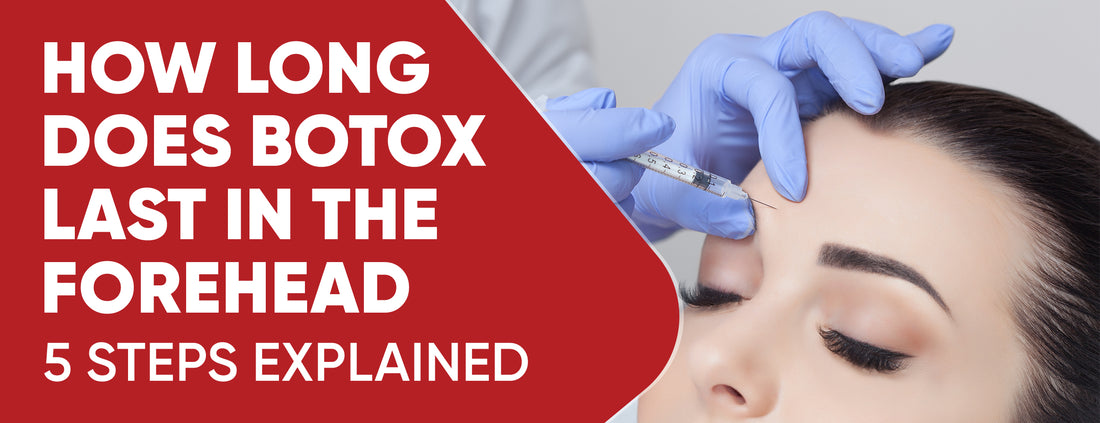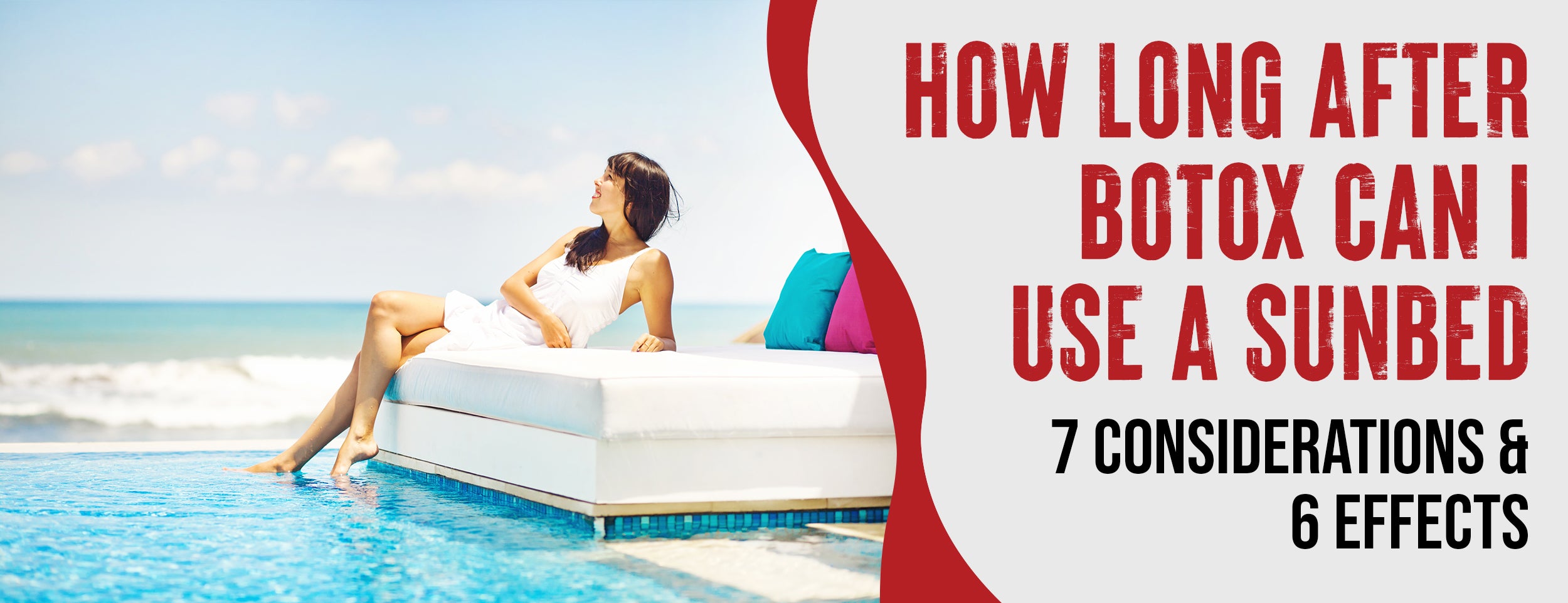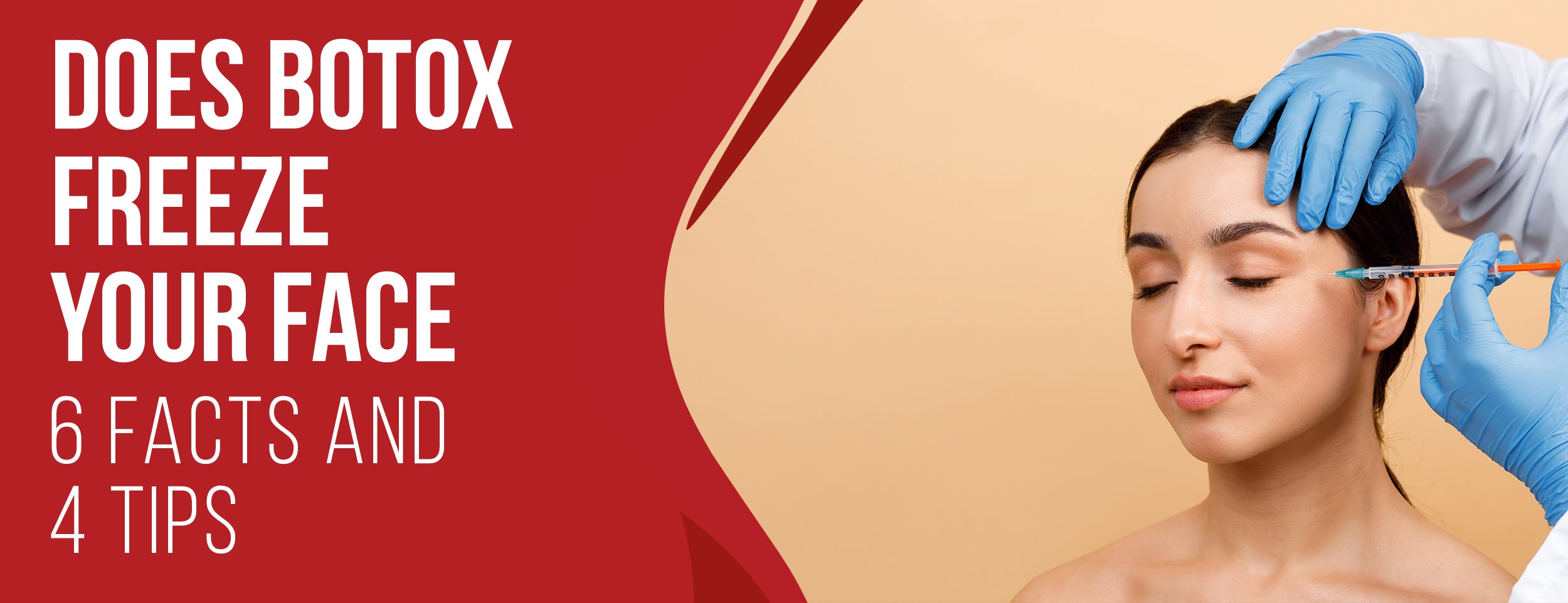The duration of the results can differ depending on the person's metabolism. Some people break down the Botox faster than others, meaning the effects may start to fade sooner. An injection technique and dosage can play a crucial role in the longevity of a treatment.
The frequency of Botox injections can significantly impact the duration of the treatment's effects. Botox injections in the forehead typically last three to six months, although regular treatments can prolong the results.
In this blog post, we'll explore in more detail how long you can expect your Botox results to last and the many factors that can influence their duration.
How Long Does Botox Last in The Forehead: Explained in 5 Steps

Botox's longevity in the forehead is influenced by various factors influencing how the treatment interacts with each physiology. Management of expectations can be helped by understanding these factors.
Dosage Administered
A person's muscle strength, treatment area, and desired outcome determine Botox dosages.
- The amount of Botox administered during the treatment session impacts how long the effects will last.
- A higher dosage might lead to longer-lasting results, but finding the right balance is crucial to avoid undesirable outcomes.
Depth And Location of Injection
The depth and precise location of Botox injections are critical to results.
- The depth and specific location of Botox injection in the forehead play a role in determining how long the effects will persist.
- Proper injection ensures that the toxin reaches the target muscles accurately, enhancing the treatment's longevity.
Variation in Metabolism
Those with faster metabolisms may experience shorter Botox durations, while those with slower metabolisms could enjoy longer results.
- People's metabolic rates differ, affecting how quickly the body breaks down and eliminates the Botox toxin. Genetic factors, lifestyle choices, and overall health contribute to this personal variability.
- Some people can experience a rapid breakdown of the toxin, resulting in shorter-lasting results, while others may experience longer-lasting effects.
Age of The Patient

Botox treatment before 35 offers optimal preventive benefits. Treatment initiated later may yield varying outcomes, depending on facial expressiveness, genetics, and skin type.
- The age of the patient can influence the duration of Botox effects.
- Younger patients might experience longer-lasting results than older patients due to differences in skin elasticity and muscle behavior.
Lifestyle Choices And Environmental Factors
Lifestyle choices can affect Botox's durability, like excessive sun exposure, smoking, and tanning beds. The environment and habits affect Botox's effectiveness, especially when seeking a more lasting result.
- Sun Exposure and Smoking: Excessive sun exposure and smoking are lifestyle factors that can shorten the duration of Botox effects in the forehead. These habits may counteract the treatment's longevity.
- Role of Environmental Factors: Various lifestyle choices, such as using tan beds, sunlight exposure, and other environmental factors, determine how well Botox will maintain its effectiveness. Considering these factors is vital for individuals aiming to achieve longer-lasting results from their Botox treatment.
Following a healthy lifestyle, having a proper skincare routine, and protecting the skin from external aggressors can contribute to prolonged results.
How Long Botox Typically Lasts in The Forehead
The duration of Botox's effectiveness in the forehead is crucial for individuals considering this cosmetic procedure. Proper maintenance, the time it takes for results to take effect, and the longevity of results are all crucial factors.
Average Duration of Botox Effectiveness
Botox's effects typically last three to four months, depending on the patient's circumstances.
- Varied Durations: Typically, Botox remains effective in the forehead for about 3-4 months. While this is the general timeframe, individual variations can lead to results lasting longer, around 4-6 months, or shorter, around 2 months, depending on factors unique to each patient.
- Gradual Fading: Botox's effectiveness gradually diminishes as the neurotoxin's action wears off over time. Once this occurs, the nerves regain the ability to transmit signals to the muscles, allowing them to contract and work as usual.

How Long It Takes For Botox To Take Effect
Botox's effects begin within two to four days, initially slowing muscle activity. The full results usually appear between ten and fourteen days after treatment, and the maximum impact lasts three months.
Initial Effects:
- Many people notice Botox's effects within a few days of treatment, although people's experiences may vary.
- Initial changes might be subtle, with gradual improvements in the following days.
Full Effect:
- Botox usually takes 7 to 14 days to reach its full effect.
- Patients are advised to wait until this period has passed before evaluating the treatment's outcome.
How Long Botox Can Last with Proper Maintenance
Maintaining Botox results for over three months can be achieved with consistent follow-up treatments. Maintenance appointments usually occur before the previous treatment has fully worn off.
Prolonging Results:
- The longevity of Botox in the forehead can be influenced by how well the patient adheres to post-treatment instructions and proper maintenance.
- Engaging in behaviors that minimize facial muscle strain and sun protection can help extend the results.
Maintenance Treatments:

- To maintain the desired appearance, patients often opt for maintenance treatments before the effects of the previous treatment have fully faded.
- Consistent follow-up appointments can lead to longer-lasting results over time.
- Each person's experience with Botox's longevity is unique. Lifestyle choices, genetics, and overall health can influence the long-term effects.
When seeking Botox for the forehead, the typical duration of its effectiveness provides valuable insight. The average timeframe for results, the gradual onset of effects, and the importance of proper maintenance all contribute to informed decisions.
Conclusion:
The botox treatment can be an effective cosmetic treatment for reducing forehead wrinkles and fine lines. While no specific answer exists to how long it lasts, the effects generally last between three to six months. Various factors can contribute to this, such as age, dosage, body type, anatomy, and frequency of treatment.
It is important to discuss your expectations and concerns with a qualified professional before receiving any Botox treatments. Their expertise can help you decide the best action to achieve your desired results.



















